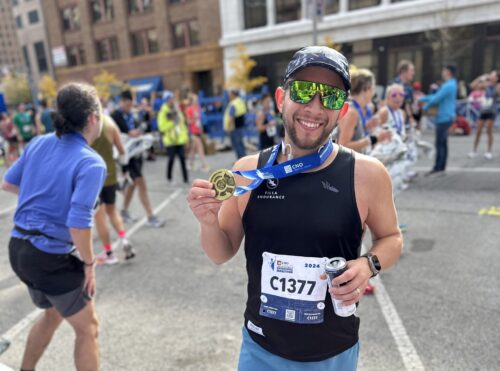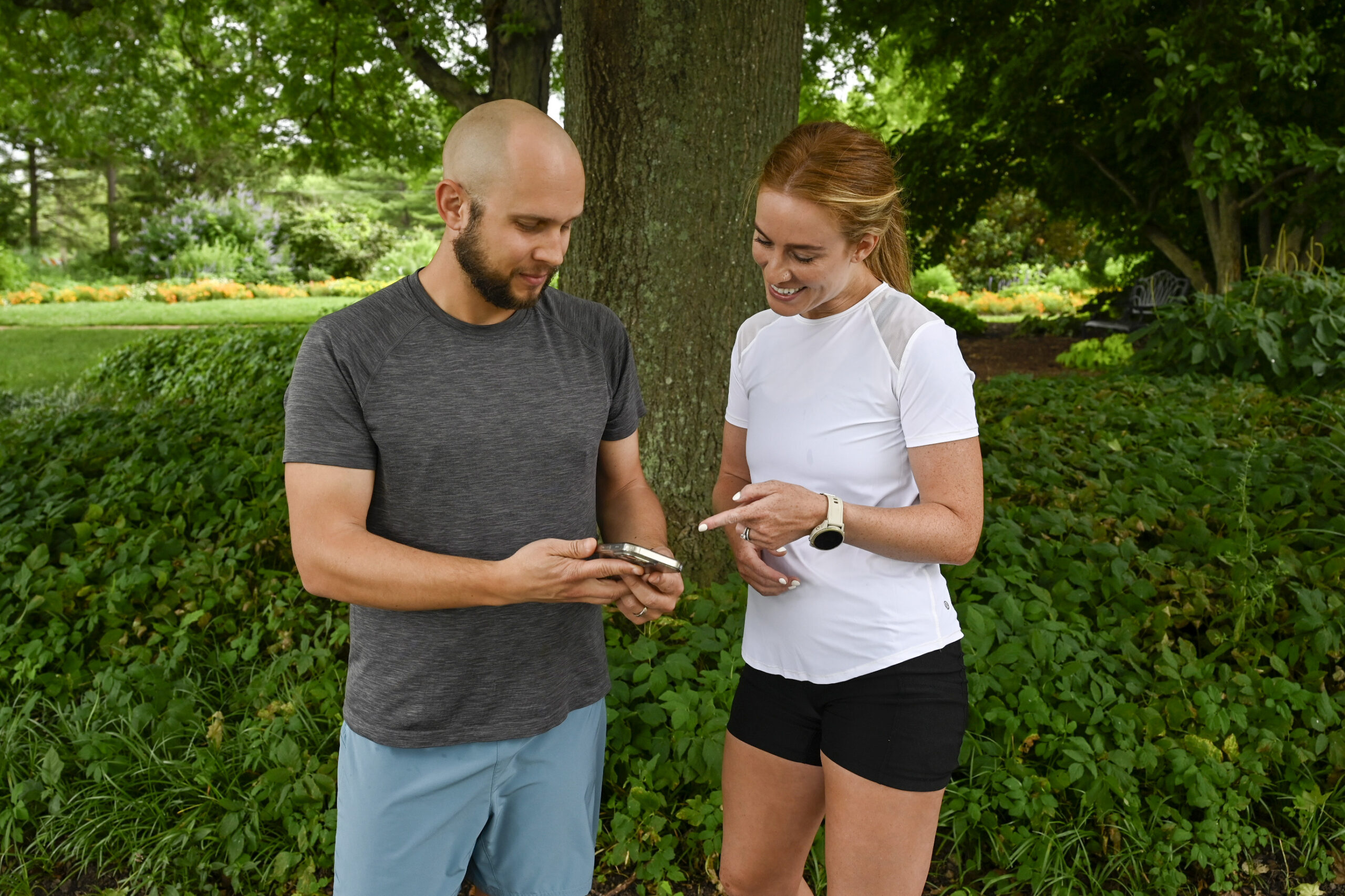Written by Christopher Oleksiw, UESCA Certified Running Coach, RunDNA Level 1 Gait Analyst
Getting Started
Starting to journey into the world of long distance running or returning after a long hiatus can be very exciting or terrifying. Both are perfectly reasonable and normal responses. You could be running based on the recommendation of a doctor to add more exercise in your life, or maybe you are just wanting to keep up with your kids/grand-kids. Maybe you just miss the feeling of moving like you did during recess as a child.
Whatever the reason, and whatever you are feeling about it, we are here to help guide you on this path to make sure that it is the best it can be.
The first thing to do when getting started is to determine what your motivation is. Are you wanting to complete your first ever 5k? Maybe your group of friends asked if you would like to be a part of a relay trail race and the idea excited you.
There are a million reasons why running is speaking to you, but it’s best to have that well defined so you know what you are working towards. It doesn’t even need to be a race. “Get to a point where I don’t feel like dying when running” is also a great goal to have. It gives direction.
The next thing is to be sure you have all the appropriate gear. While it is true you can go out and just run, there are a few things to make the experience a bit better.
Here is a list of things that we recommend you give a try and with explanations why we think they should be a part of your running life.
👟 Running Shoes – while you can run in Crocs, it’s not the easiest on your body to do so. We recommend you go to a local running specialty store (Big River Running is a great option if you live in the St Louis area) to have knowledgeable staff help you find the best shoe for you.
🎧 Open Ear Headphones – running with music, a podcast, or an audio-book is a common practice. You certainly don’t need to listen to anything while running. Many get their miles in just enjoying the sound of nature, especially for trail running. However, if you do want to listen to something while running, we highly recommend an open ear headphone (e.g. Shokz which could be purchased at a Big River Running store) as they do not block external sounds. This is a safety feature of these headphones. This allows runners to stay safe while listening to their music. You will be able to hear vehicles coming, bikes about to pass you, or other walkers and runners you may come across.
⌚️ Sport watch or Mile Tracking App – Again, not a requirement, but can come very handy in tracking your progress. Sport watches (e.g. Garmin, Apple Watch, Coros) and a mile tracking app (e.g. Nike Run Club, Strava, MapMyRun) all have GPS and can tell you important metrics like pace, distance, and heart rate. Watches have heart rate monitors built in, but apps can too if paired with a heart rate monitor). People throughout history have ran without any of these devices, but it was a lot harder to track progress.
Common New Runner Mistakes
Alright, we have a clear idea of the motivation behind our running, we have all the gear we need. Time to head out the door and run as far and hard as we can, right?
WRONG! 🚨
Many (including me) have made this mistake when getting into running. It seems to make sense (if the goal is a 5k, go out and keep running 5ks!), but in practice it leads to burn out or injury. We are just getting started, so we need to ease into it.
In school, you don’t go to class and do the test on day 1. It helps to learn the concepts and do the homework first. Same with running. We need to get the body used to running, build endurance and musculoskeletal adaptations gradually over time. When just getting started, a great method is to do a series of walk/run intervals. This will help ease you into longer and longer distances until one day you are ready to take that test!
Ok, so we are going to do walk/run intervals. Shoes are tied. Music lined up. Watch GPS locked on. Can I run now? Before starting your first run (or any workout really), we need to warm up.
Our coaches are big fans of dynamic stretching pre-run. These move the body and muscles in a way that adds active stretching to the muscles and not just yanking on cold muscles. We have added a video of what these dynamic stretches look like.
Now we are ready! 🥳
Post run, it is important to stretch out. These can be simple calf stretches, quad pulls, and a standing toe touch. Also, don’t forget to eat something post run. A classic go-to is chocolate milk. It has a great ratio of carbs to protein. Though, chocolate milk post run might not appeal to some, so another good option is a smoothie with protein powder. We want to replenish our carbohydrates as well as provide some protein for our body to adequately repair/recover. Consulting with a sports RD for specifics can help customize your nutrition.
Every Runner’s Toolkit
Strength training, carbohydrates, and sleep are 3 of the most important things that belong in every runner’s toolkit, from newbie to elite.
🏋️♀️ Strength – Did you know that the amount of forces on a runner’s body during running can be 2-3x their body weight? That is a lot of forces put on the body, thousands of times during a run! It is common to think that we are only supporting our body weight during running, but if your muscles and joints can handle your body weight, then you could be on a road to injury. This is one of the reasons why it is imperative to incorporate strength training in your running routine. Strengthening the body to handle these forces will help make you a better runner and keep injuries at bay.
🥐 Carbs – Of the three macro-nutrients (carbohydrates, fat, and protein), which can our body burn as fuel? The simplest answer is, all three! But the most efficient one is carbohydrates. Typically at slower/easier paces, our body is burning a larger portion of fat, but we are still burning carbohydrates at all paces/stages.
😴 Sleep – Sleep is one of the most important tools we have for health, and for athletes, it’s even more important. Having a deficit on sleep can lead to a long list of health issues, and for runners, it could mean you are not fully recovering which could lead to runs being extra difficult or an injury
A simple way to improve your sleep quality is the 10-3-2-1-0 method:
10 hours before bed = no more caffeine
3 hours before bed = no more alcohol
2 hours before bed = no more work
1 hour before bed = no more screens
0 = 0 alarm snoozes
Following this method is a good starting guideline for improved sleep which can mean you are more well recovered and ready for that next workout.
The Finish Line
Going out for your first run doesn’t need to be scary. Use these tips and you are well on your way to smoothly getting ticking away the miles. Here are a few more resources to help you on your way.
Here is the Filla Endurance recommended warm up routine that should be done before every run. If you don’t have time to warm up or cool down after a workout, then you don’t have time to workout!
https://www.youtube.com/watch?
Below is a sample 4 week plan to get you started into the wonderful world of running. It is a walk/run plan so you won’t be running nonstop with these runs. We also suggested a day to do your strength training. Remember that running needs strength. Neglecting that could be a gamble with an injury
This is just an example. ⬇️ If the intervals are too easy or too hard, the time or amount of intervals can be adjusted to better match your abilities (try 2 mins running instead of 3, or 3 intervals instead of 4 for example). Want more individual advise for getting started with running? Email me at coachchris@fillaendurance.com — let’s chat!





